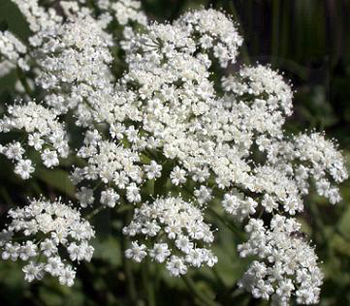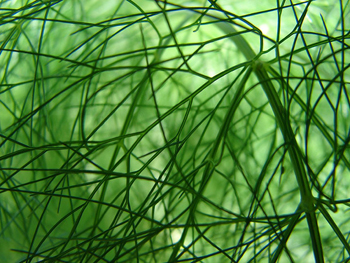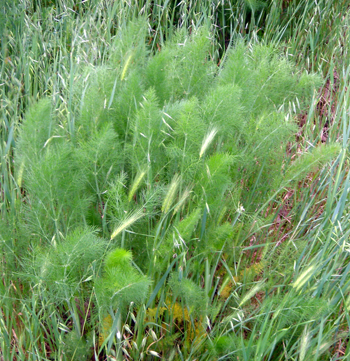Contents:
Common Names | Parts Usually Used | Plant(s) & Culture | Where Found | Medicinal Properties | Biochemical Information
Legends, Myths and Stories | Uses | Formulas or Dosages | How Sold | Resource Links | Bibliography
Scientific Names

- Pimpinella anisum L.
- Umbelliferae
- Umbel family
Common Names
- Anise plant
- Aniseed
- Anise seed
- Common anise
- Hua-hsian
Parts Usually Used
Seed
Back to Top
Description of Plant(s) and Culture

An annual plant; the spindle-shaped, thin, woody root sends up a round, grooved, branched stem up to
Back to Top
Where Found

Anise occurs wild but is widely cultivated. Native to the Mediterranean.
Back to Top
Medicinal Properties
Antispasmodic, antiseptic, aromatic, carminative, digestive, expectorant, stimulant, stomachic, tonic
Back to Top
Biochemical Information
Essential oil with anethole, choline, fatty oil
Back to Top
Legends, Myths and Stories
Most people don’t think of anise in terms of its popularity with mice, but in the 16th century, anise found wide application as a mouse-trap bait. According to several old herbals, the mice found it irresistible. The Romans served a wedding cake strongly flavored with anise seeds to help prevent indigestion caused by overeating at the marriage banquet. From this ancient practice came the tradition of baking special cakes for weddings.
Anise is called Huai-hsiang in China, eaten to relieve flatulence and griping bowels. The Herbal Almanac states the a few drops of Oil of Anise, or Oil of Rhodium on a trappers bait will entice any wild animal into the snare trap.
Back to Top
Uses
Anise promotes digestion, improves appetite, alleviates cramps and nausea, cough, colds, and relieves flatulence and bad breath. Is useful as an expectorant for coughs. Anise water promotes milk production in nursing mothers, and a soothing eyewash. Said to promote the onset of menstruation when taken as an infusion. Anise oil helps relieve cramping, and spasms and is good as a stomach tonic. For insomnia, that a few seeds in a glass of hot milk before bedtime. Can be made into a salve to use for scabies or lice. A tea made from equal parts of anise, caraway, and fennel makes an excellent intestinal purifier. Because of its sweetness, anise is a good additive to improve the flavor of other medicines.
Anisette, sold in most liquor stores, has volatile oil of anise as part of the preparation. Anisette is reputedly helpful for bronchitis and spasmodic asthma. Taken in hot water, anisette is said to be an immediate palliative.
5 to 10 drops of anise oil on top of a tsp. of honey, taken every
Anise has a wide variety of applications in cooking as well as medicine.
Back to Top
Formulas or Dosages
As seeds ripen, turning from green to gray-brown, harvest them. Alcohol extracts the medicinal properties of anise more effectively than water.
Infusion: use
Decoction: for colic, boil
Tincture: to prepare, add
Anise water: boil
Back to Top
How Sold
Seed
Back to Top
Resource Links
LiveStrong.com: Anise for Colic
U.S. Food and Drug Administration: When Baby Arrives
PubMed.gov: Neurotoxicities in infants seen with the consumption of star anise tea.
Bibliography
![]() Back to Eden
Back to Eden, by Jethro Kloss; Back to Eden Publishing Co., Loma Linda, CA 92354, Original copyright 1939, revised edition 1994
![]() The Herb Book
The Herb Book, by John Lust, Bantam Books, 666 Fifth Avenue, New York, NY. copyright 1974.
 Old Ways Rediscovered
Old Ways Rediscovered, by Clarence Meyer, Meyerbooks, publisher, PO Box 427, Glenwood, Illinois 60425, published from 1954, print 1988
![]() The Nature Doctor: A Manual of Traditional and Complementary Medicine
The Nature Doctor: A Manual of Traditional and Complementary Medicine, by Dr. H.C.A. Vogel; Keats Publishing, Inc., 27 Pine Street (Box 876) New Canaan, CT. 06840-0876. Copyright Verlag A. Vogel, Teufen (AR) Switzerland 1952, 1991
![]() Chinese Medicinal Herbs
Chinese Medicinal Herbs, compiled by Shih-Chen Li, Georgetown Press, San Francisco, California, 1973.
![]() The Complete Medicinal Herbal
The Complete Medicinal Herbal, by Penelope Ody, Dorling Kindersley, Inc, 232 Madison Avenue, New York, NY 10016, First American Edition, copyright 1993
 Earl Mindell’s Herb Bible
Earl Mindell’s Herb Bible, by Earl Mindell, R.Ph., Ph.D., Simon & Schuster/Fireside, Rockefeller Center 1230 Avenue of the Americas, New York, New York 10020
![]() The Herbalist Almanac
The Herbalist Almanac, by Clarence Meyer, Meyerbooks, publisher, PO Box 427, Glenwood, Illinois 60425, copyright 1988, fifth printing, 1994
![]() Indian Herbalogy of North America
Indian Herbalogy of North America, by Alma R. Hutchens, Shambala Publications, Inc., Horticultural Hall, 300 Massachusetts Avenue, Boston, Massachusetts 02115, 1973
Herbal Gardening, compiled by The Robison York State Herb Garden, Cornell Plantations, Matthaei Botanical Gardens of the University of Michigan, University of California Botanical Garden, Berkeley., Pantheon Books, Knopf Publishing Group, New York, 1994, first edition
![]() Planetary Herbology
Planetary Herbology, by Michael Tierra, C.A., N.D., O.M.D., Lotus Press, PO Box 325, Twin Lakes. WI 53181., Copyright 1988, published 1992
![]() American Folk Medicine
American Folk Medicine, by Clarence Meyer, Meyerbooks, publisher, PO Box 427, Glenwood, Illinois 60425, 1973
 Secrets of the Chinese Herbalists
Secrets of the Chinese Herbalists, by Richard Lucas, Parker Publishing Company, Inc., West Nyack, NY, 1987.
![]() Webster’s New World Dictionary
Webster’s New World Dictionary, Third College Edition, Victoria Neufeldt, Editor in Chief, New World Dictionaries: A Division of Simon & Schuster, Inc., 15 Columbus Circle, New York, NY 10023
 The Magic of Herbs in Daily Living
The Magic of Herbs in Daily Living, by Richard Lucas, Parker Publishing Co. (1988).
 The Rodale Herb Book: How to Use, Grow, and Buy Nature’s Miracle Plants (An Organic gardening and farming book)
The Rodale Herb Book: How to Use, Grow, and Buy Nature’s Miracle Plants (An Organic gardening and farming book), edited by William H. Hylton, Rodale Press, Inc. Emmaus, PA, 18049., 1974
![]() The Yoga of Herbs: An Ayurvedic Guide to Herbal Medicine
The Yoga of Herbs: An Ayurvedic Guide to Herbal Medicine, by Dr. David Frawley & Dr. Vasant Lad, Lotus Press, Twin Lakes, Wisconsin, Second edition, 1988.
